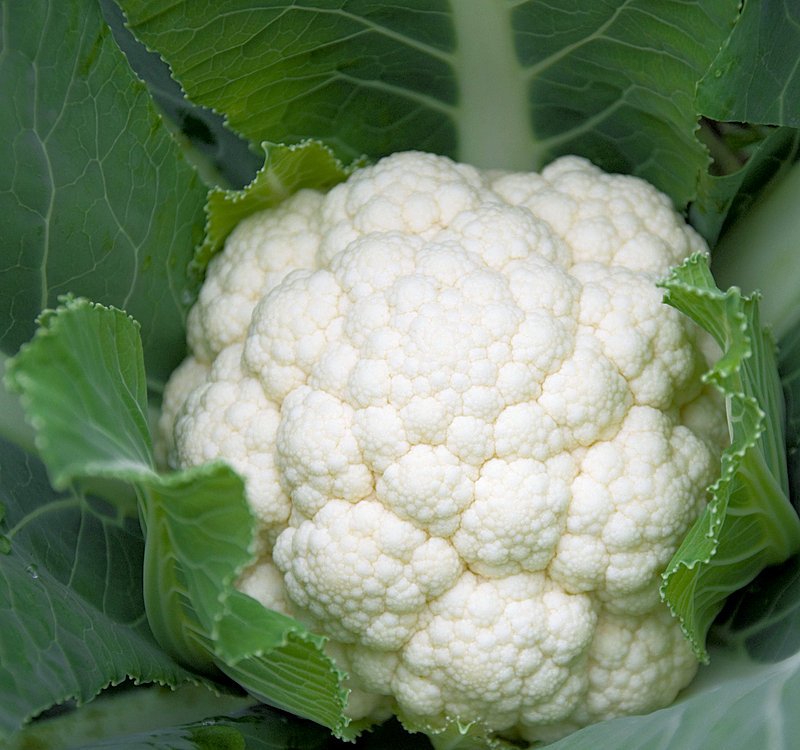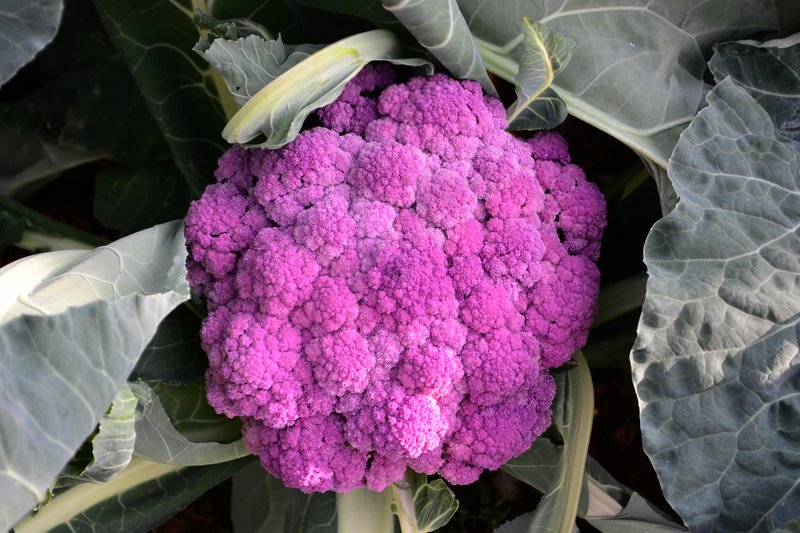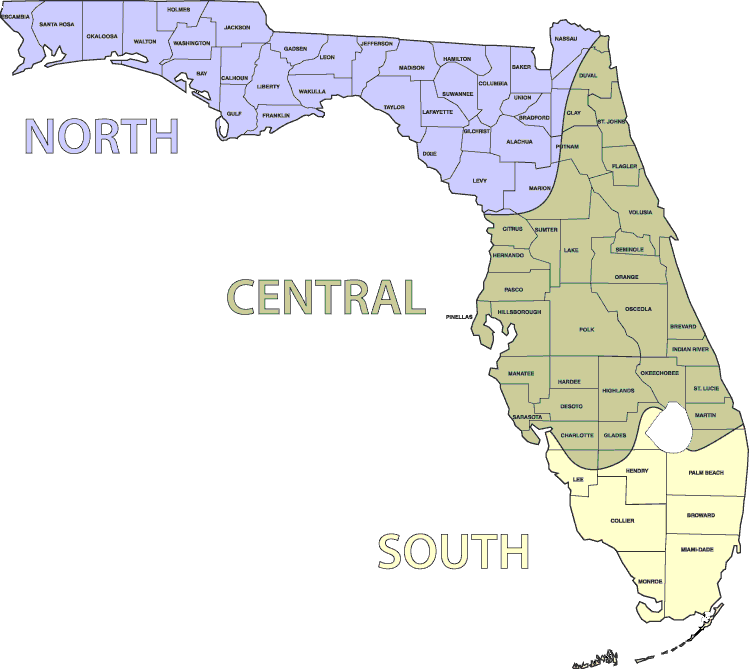Cauliflower Varieties for Florida
Cauliflower, with its dense, creamy-white heads and broad green leaves, adds a touch of elegance to any garden. This cool-season vegetable is known for its compact and intricate florets that form a solid head. The contrast between the white curds and the surrounding foliage makes cauliflower a visually striking addition to garden beds.
In Florida planting zone 9, cauliflower thrives particularly well during the cooler months. The heads form into tight, cohesive clusters, ready to be harvested when they reach their peak size and firmness. Watching these beautiful heads develop is a rewarding experience, showcasing the success of your gardening efforts.
For those new to gardening, cauliflower can be a delightful challenge. It’s not only visually appealing but also highly nutritious, offering a variety of culinary uses. Whether you enjoy it roasted, steamed, or as a rice substitute, cauliflower brings a fresh and healthy addition to your meals, making your gardening endeavors both productive and enjoyable.
I would give cauliflower a 3 out of 5 on how easy it is to grow. While it requires some attention to temperature and timing, it is still manageable for beginners with a bit of planning.
Snowball Y Improved
Heirloom

Description: Snowball Y Improved is a popular heirloom variety known for its reliable performance and adaptability. It produces smooth, dense, white heads with excellent flavor.
Growing Season: Fall and Winter
USDA Planting Zone: 3-9
Special Notes: Early maturing and tolerant of a variety of soil types. It's well-suited for both fresh market and home garden use.
Cheddar
Hybrid

Description: Cheddar is a unique cauliflower variety that produces bright orange heads rich in beta-carotene. It has a mild, sweet flavor.
Growing Season: Fall and Winter
USDA Planting Zone: 4-9
Special Notes: Adds a splash of color to dishes and retains its color when cooked. It matures in approximately 58-68 days.
Graffiti
Hybrid

Description: Graffiti is a striking purple cauliflower variety known for its vibrant color and high antioxidant content. It has a mild, nutty flavor.
Growing Season: Fall and Winter
USDA Planting Zone: 3-9
Special Notes: The color intensifies with exposure to sunlight. It retains its purple hue when cooked, adding visual appeal to dishes.
Snow Crown
Hybrid

Description: Amazing is a hybrid variety known for its large, uniform, and tightly packed white heads. It has a sweet and mild flavor.
Growing Season: Fall and Winter
USDA Planting Zone: 4-9
Special Notes: Highly tolerant of heat and humidity, making it a good choice for Florida's climate. It matures in about 70-80 days.
Veronica (Romanesco)
Hybrid

Description: Veronica, also known as Romanesco broccoli, produces striking lime-green heads with a fractal pattern. It has a crisp texture and nutty flavor.
Growing Season: Fall and Winter
USDA Planting Zone: 3-9
Special Notes: Adds visual interest to the garden and dishes. It prefers cooler temperatures for optimal growth.
Florida Vegetable Planting Guide
This guide provides information on when to start seeds inside, direct seed, and transplant starter plants in the different regions of Florida.
North USDA Planting Zones: 8b-9a
Central USDA Planting Zones: 9b & some of 10a
South USDA Planting Zones: 10a-11b
Visit the U.S. National Arboretum for an Exact USDA Planting Zone Map.

| Cauliflower | North Florida | Central Florida | South Florida |
|---|---|---|---|
| Start Seeds Inside | Aug-Jan | Aug-Jan | Aug-Dec |
| Direct Seed | Aug-Feb | Sep-Feb | Sep-Jan |
| Transplant Starter Plants | Sep-Feb | Sep-Feb | Oct-Jan |
Explanation:
Start Seeds Inside: Starting cauliflower seeds indoors in late summer allows for controlled conditions to ensure proper germination and strong seedlings ready for transplanting in the fall.
Direct Seed: Direct seeding cauliflower during the cooler months ensures rapid germination and establishment, avoiding the heat stress that can negatively impact growth.
Transplant Starter Plants: Transplanting cauliflower starter plants in the cooler months helps them establish quickly and take advantage of the full growing season, leading to healthier and more productive plants.
_________________________________________________________________________________________________________________________
Soil: Cauliflower prefers well-drained, fertile soil with a pH between 6.0 and 7.5. Amend the soil with compost or well-rotted manure to improve fertility.
Sun: Full sun is ideal, but cauliflower can tolerate partial shade, especially in hotter climates.
Watering: Keep the soil consistently moist but not waterlogged. Mulching helps retain soil moisture and regulate temperature.
Spacing: Plant seedlings 18-24 inches apart in rows & spaced 12-18 inches apart to allow adequate air circulation and room for growth.
Fertilization:
N-P-K Ratio: Cauliflower benefits from a balanced fertilizer with a higher nitrogen content to support leafy growth and head development, such as 10-10-10 or 14-14-14.When to Add:
Before Planting: Apply the balanced fertilizer to the soil before planting seeds or transplants to promote strong initial growth.
Mid-Growing Season: Reapply the fertilizer about four weeks after planting and again when the heads start to form to support continued growth and head development.
Application Tips:
Follow the directions on the fertilizer package to avoid over-fertilization.
Apply the fertilizer evenly around the base of the plants and water thoroughly to help the nutrients reach the roots.
Additional Tips:
Cauliflower grows best in well-drained soil rich in organic matter, so consider adding compost to improve soil fertility and structure.
Mulch around the plants to help retain moisture, suppress weeds, and regulate soil temperature.
Ensure that cauliflower receives consistent moisture, especially during head formation, to prevent stress and promote even growth.
Blog post on Natural Fertilizers
Blanching: Plants are cold hardy; heads are not. To keep white varieties white, tie the outer leaves over the heads when they are about 2-3 inches in diameter to protect them from cold & sunlight.
Harvest: Cauliflower is ready to harvest when the heads are firm, compact, and about 6-8 inches in diameter, typically 50-90 days after planting. Cut the head off with a sharp knife, leaving a few outer leaves to protect it.
By selecting the right cauliflower varieties and following these growing tips, you can achieve a successful and bountiful cauliflower harvest in your Florida garden.
Pests and Diseases that affect Cauliflower in Florida:
Aphids: Small insects that suck sap from the leaves and stems, causing curling and yellowing.
Cabbage Worms: Caterpillars that chew large holes in the leaves.
Flea Beetles: Small beetles that chew small holes in the leaves.
Cutworms: Caterpillars that cut down young plants at the base.
Natural Pest Control
Downy Mildew: A fungal disease that causes yellowing leaves with a fuzzy, grayish growth on the underside.
Clubroot: A fungal disease that causes swollen and distorted roots, leading to stunted growth.
Companion Plants:
Marigold
Description: Marigolds are bright, sunny flowers that come in a variety of colors including yellow, orange, and red.
Growing Season: Spring through fall
USDA Planting Zone: 2-11
Special Notes: Marigolds release chemicals in the soil that deter nematodes and other soil-borne pests.
How it Helps: Marigolds help repel aphids, flea beetles, and other pests. Their roots secrete a substance that helps prevent nematodes, protecting cauliflower’s root system.
Onions
Description: Onions are bulbous vegetables with a pungent taste and strong aroma.
Growing Season: Fall to spring
USDA Planting Zone: 3-9
Special Notes: Onions prefer full sun and well-drained soil.
How it Helps: Onions help repel aphids, flea beetles, and other pests that can damage cauliflower. Their strong odor masks the scent of cauliflower, making it harder for pests to locate them.
Dill
Description: Dill is an herb with feathery green leaves and yellow flowers, known for its use in pickling.
Growing Season: Spring to early summer
USDA Planting Zone: 2-11
Special Notes: Dill prefers full sun and well-drained soil.
How it Helps: Dill attracts beneficial insects such as ladybugs and predatory wasps that prey on aphids, cabbage worms, and flea beetles. It also helps improve the health of surrounding plants by enhancing their growth.
Chamomile
Description: Chamomile is a daisy-like herb known for its small, white flowers and calming properties.
Growing Season: Spring to summer
USDA Planting Zone: 3-9
Special Notes: Prefers full sun to partial shade and well-drained soil.
How it Helps: Chamomile attracts beneficial insects like hoverflies and parasitic wasps that prey on aphids and other pests. It also has antifungal properties that can help protect cauliflower from diseases.
Thyme
Description: Thyme is a low-growing perennial herb with small, aromatic leaves and purple or pink flowers.
Growing Season: Spring to fall
USDA Planting Zone: 5-9
Special Notes: Thyme prefers full sun and well-drained soil.
How it Helps: Thyme helps repel cabbage worms, flea beetles, and other pests with its strong aroma. It also attracts beneficial insects that prey on pests affecting cauliflower.
These companion plants help protect cauliflower from pests and diseases while also enhancing the overall health and productivity of the garden.
For cauliflower, here are the vegetable plants that should not be planted nearby:
Strawberries - Can attract pests and diseases harmful to cauliflower.
Tomatoes - Compete for nutrients and can attract pests that affect cauliflower.
Peppers - Can stunt the growth of cauliflower.
Pole Beans - Can inhibit the growth of cauliflower.
Other Brassicas (Cabbage, Brussels Sprouts, Broccoli, Kale) - Compete for the same nutrients and can attract similar pests and diseases.
